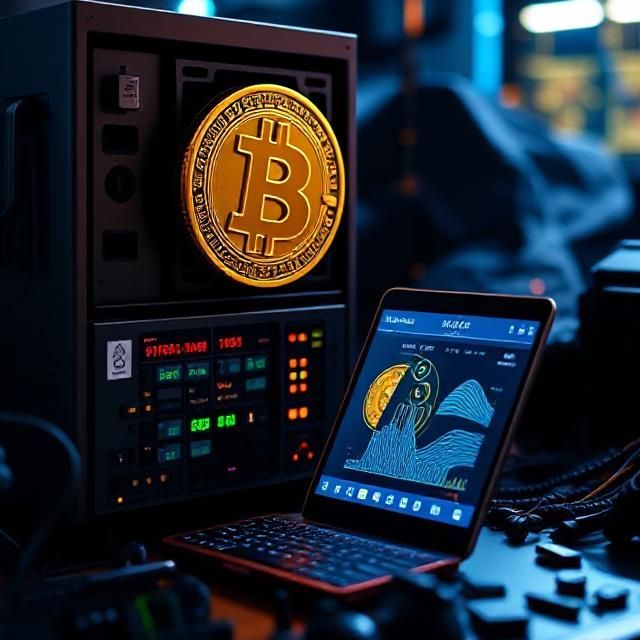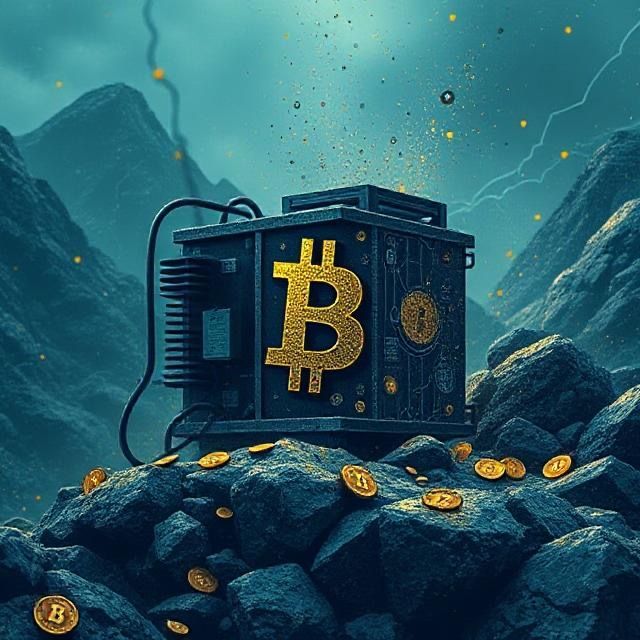The Beginner’s Guide to Litecoin
When it was first released in 2011, Litecoin was deemed by its creators as the “future of commerce.” Since then, the cryptocurrency that lets you send money anywhere in the world instantly has had a spectacular evolution to become the 6 th most valuable crypto in the world and stay true to its foretold success.
While some consider Litecoin to be nothing more than the “silver” to Bitcoin’s “gold,” this crypto’s evolution has successfully proven that it is more than just a sidekick of the most famous digital asset in the world.
With a global market value that exceeds $4.8 billion, Litecoin is more than just the Robin to Bitcoin’s Batman in the cryptocurrency Universe where it steadily establishes itself as a stand-alone crypto superhero.
Litecoin in a Nutshell
- Litecoin is a decentralized online currency
- Litecoin was originally issued in 2011
- Litecoin uses blockchain technology
- Litecoin enables you to make payments with minimal costs or no fees at all
- Litecoin money transfers cannot suffer chargebacks
- Litecoin can be stored safely on your computer or your smartphone
- Litecoin exists in a limited amount of 84 million units
- Litecoin can be traded for fiat currencies and vice-versa through secure online exchanges
- Litecoin can be traded for other cryptos through cross-chain atomic swaps
- Litecoin has countless uses and endless potential for development
What is Litecoin?
Litecoin follows in the footsteps of its online currency predecessors and competitors like Bitcoin , Ethereum and Ripple to offer easy and safe virtual payments to users from all over the world.
Litecoin appeared as a spin off from Bitcoin and it has a nearly identical working process to the most famous cryptocurrency out there.
Litecoin works as a decentralized online currency that uses secure software and blockchain technology to enable you to send and receive payments instantly, and as easily as writing a text message.
You can use Litecoin to purchase services or pay for goods online at merchants that accept it as a form of payment.
The best part of using this crypto is its ability to transfer money with lightning speed. One of its most famous achievements is the transfer of 0.00000001 LTC from Zürich to San Francisco in barely one second in 2017 . The event is seen as a significant breakthrough for blockchain technology and a turning point in the history of peer-to-peer cryptocurrency.
A brief history of Litecoin
The Litecoin founder is Charlie Lee, a former Google employee that released the cryptocurrency in 2011.
He did so by creating a fork of Bitcoin and modifying some of the key components to reduce the time necessary for block generating from 10 minutes to only 2.5 minutes. By changing the hash algorithm to Scrypt from SHA-256, the system managed to enhance the number of coins created in this given time.
It wasn’t until 2013 that Litecoin gained major publicity and recognition in the crypto industry. During November of that year, its aggregate value soared significantly and it even achieved a 100% surge in less than 24 hours .
Four years later, Litecoin was the first big-name cryptocurrency to adopt Segregated Witness (SegWit), which is a soft fork change in the ledger that prevents non-intentional transactions and allows optional data transmission.
By the end of 2017, Charlie Lee had gained over 370.000 followers on Twitter and was already a key influencer in the crypto community. At that time, he announced via a Reddit post that he would be selling all of his Litecoins due to conflicts of interest.
In 2018, Litecoin developers announced the release of Litepay, which was hyped as an alternative to Bitpay and the payment processor through which retailers and users could accept Litecoin transactions anywhere in the world. Unfortunately, the entire project soon collapsed and even Charlie Lee apologized for the failure.
How does Litecoin work?
Similarly to Bitcoin, Litecoin uses blockchain technology to sustain a high volume of transactions in an incredibly shorter amount of time.
As open-source software, Litecoin works through the autonomous verification of binaries and their analogous source code, which is also known as “mining.” Whenever a transaction takes place, its verification is processed across a network of high-performance computers that collectively confirm its authenticity, better known as “proof of work.”
Contrary to Bitcoin, Litecoin uses a different algorithm called Scrypt, which supports enhanced processing from parallel mining sources. Its benefits include:
- Increased access for new miners
- Larger rewards for mining computers (25 Litecoins per block)
- Quicker processing than through the SHA-256 algorithm
- Faster confirmation times
- More suitable for merchants and other end-users
- Easily affordable to mine for regular users
What are the differences between Litecoin and Bitcoin?
Litecoin is a direct competitor of Bitcoin, but each one of the achievements that mark its progress is another step ahead for the most popular crypto in the world, too. Since they both use a very similar working process, they both benefit from each other’s development.
Still, there are a few significant differences between Litecoin and Bitcoin.
First off, Litecoin has already achieved its main goals of being faster and more efficient than Bitcoin. Its mining process together with the implementation of SegWit and the use of the Lightning Network have helped it handle and secure a higher volume of transactions in a shorter period.
Additionally, Litecoin emphasizes the use of cross-chain atomic swaps , which enable users to trade cryptos without the need for trusted exchange. Instead, they can do so through a simple smart contract.
Litecoin learned from Bitcoin’s flood attack of 2015 and patched its network to make it immune to such potentially destructive forces. It did so by making the attacks as economically unprofitable as possible for the hackers.
Litecoin is not only more efficient than Bitcoin, but its network can uphold the development of 4 times more coins. While Bitcoin can never exceed a cap of 21 million coins, Litecoin is programmed to touch the ceiling of an 84 million cap.
How to mine Litecoin
When it comes to mining Litecoin, one of the main disparities between this crypto and Bitcoin comes into play. While both use a blockchain and miners to solve difficult cryptographic puzzles, the way they go about it is different.
Bitcoin uses application-specific integrated circuits (ASICs) and the SHA-256 hashing algorithm to mine new blocks of Bitcoins and confirm transactions. Users often combine their powers to complete mining faster and more efficiently in conglomerate systems of ASICs called “mining pools.”
Within a mining pool, the miners use parallelization to solve the puzzles that they receive. This means that they commit a significant amount of energy to untangle the problems at the same time, which may become a waste of power in the long run.
Litecoin adopts an easier and more accessible mining process. Instead of using parallelization, Litecoin miners solve problems in continuing order, one by one.
This way, they do not need to become part of a mining pool, they do not waste energy, and the relatively small amount of needed power enables regular users to mine cryptos on decent-performance computers.
How to buy and own Litecoin
You can easily use trusted exchanges to trade fiat currency for Litecoins if you want to own some, but you are not able or wish to mine them yourself.
On websites like Coinbase , you can buy or sell Litecoin for dollars, euros and other currencies quickly and safely. Other secure exchanges include Binance , Kraken , and BTCC .
At the time of writing, the value of Litecoin on CoinMarketCap was of $73.29.
You can safely exchange other fiat payment methods to purchase Litecoins, such as USD, EUR or RUB.
Additionally, you can own Litecoin if you create an online wallet and accept payment in Litecoins for various services.
Where to store Litecoin
- You can safely store Litecoin in conventional cryptocurrency wallets including:
- Litecoin Wallets – Crypto wallets for PC, MAC, Linux, iOS and Android-running devices
- Hardware Wallets – USB sticks modified to support blockchain technology, such as Ellipal , Ledger or Trezor
- Desktop Wallets – Hot wallets/applications that you can download and install on your PC. like the Atomic Wallet
- Mobile Wallets – Apps that you can download and install on your phone, like Coinomi , Jaxx or Mycelium
- Paper Wallets – Printed proof of your private keys that you can store in a safe place
The Advantages of Using Litecoin
- At 2 minutes and 30 seconds per transaction, Litecoin is way faster and more efficient than Bitcoin, which may take up to 10 minutes to complete the same operation
- Litecoin is immune to flood attacks
- You can easily mine Litecoins on an average performance computer. You do not need an ASICS machine as it is the case with Bitcoin
- Litecoin transfers involve lower transaction fees than credit card companies and banks
- With Litecoin you can send money anywhere in the world to anyone instantly
- Litecoin can be traded for both fiat currencies and other cryptocurrencies
The Risks of Investing in Litecoin
- The loss or misplacement of your private keys will mean the complete loss of all your Litecoins
- Software problems may cause corrupted wallet files and unsafe cryptographic libraries
- Damage to your hardware wallet will result in losing your entire Litecoin library
- Future developments of Litecoin may have the same disappointing fate as Litepay did
The post The Beginner’s Guide to Litecoin appeared first on Crypto Adventure.




